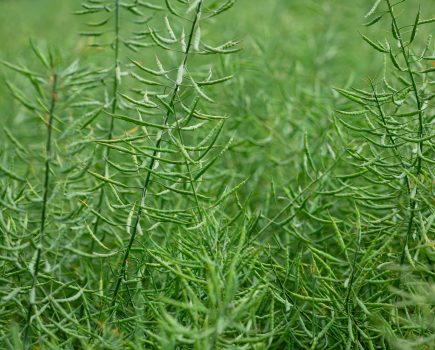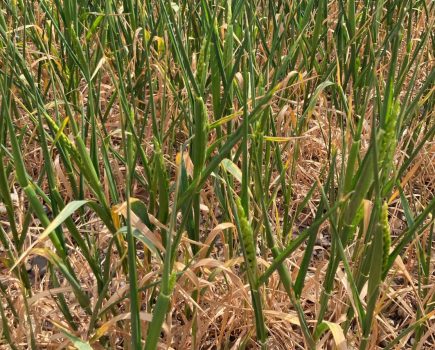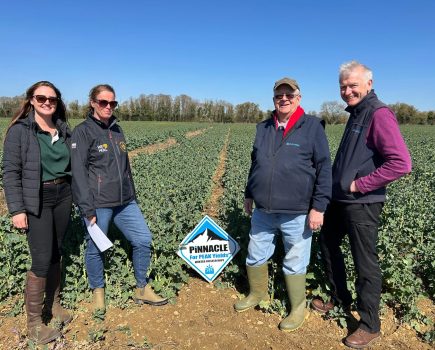Welcome to an inspiring new column that is set to be contributed each month by Chichester Crop Consultancy (CCC). This month’s comes from Simon Roberts.
Hopefully we have seen the back of the wet weather and field work is able to be considered again. The first point of call is to review late-drilled and poorly established crops and fields destined for a winter crop that didn’t get drilled pre-Christmas. With the national wheat area planting down, demand for spring seed has increased, so availability will be an issue for anyone ordering at the last minute.
Late Drilled Winter Wheat
Although the safe sowing date has passed for most varieties of winter wheat, there are a few options that can be drilled until the end of February. Based on the AHDB vernalisation information on the 2023/24 recommended list, Skyfall, KWS Brium, RGT Bairstow and Swallow are safe to drill up to the end of February. There is limited yield data for these later-drilling timings and it is essential to establish in good soil conditions to limit any yield penalty.
Late Drilled Winter Beans
Winter bean seed may well still be sat in the shed and can still be sown in February/March, but bear in mind that later drilling will lead to later harvesting and seed rates will need increasing to levels nearer to those for spring beans, as they will behave more like a spring sown crop with limited ability to tiller.
The deadline for applying propyzamide has passed, so difficult grassweed control scenarios will lead to compromised weed control. Fallow/cover crop options may be worth considering as an alternative in areas where grassweeds are a significant threat.
Cover Crop Management
With the increased planting of over-wintered cover crops in recent years, preparation for the following crop needs consideration. Leaving the cover crop too long can have an impact on its management. If cover crop gets too lignified it is slow to break down and can inhibit nitrogen availability to the following crop.
Grazing may well have already taken place, but care needs to be taken to avoid poaching and compaction during wet conditions. If there are some harsh frosts (-8°C), and if the farmer is dedicated enough, rolling during the early hours has been shown to be a good way of killing the radish/brassica components, thus exposing the grassweeds and smaller broadleaved weeds to be controlled with glyphosate.
If relying on chemical destruction, robust rates of glyphosate (1440g) are required for the larger canopies, and where difficult to kill broadleaved weeds including clover are present, then formulations that include 2-4d should be considered. Note that it is important to ensure when using any 2-4d product that intervals from application to drilling are adhered to in order to avoid any potential following crop issues.
BYDV risk
Turning attention to crops established before the wet weather in October, apart from the pre-emergence herbicide you may not have had the opportunity to travel since then. While the heavy rain seemed to keep visible aphid presence low, if conditions continue to be favourable for aphid survival, BYDV risk and yield reduction remains a concern. Monitoring for aphids is advised until the beginning of stem extension; where found, treat accordingly.
Nitrogen planning
Judging the amount of residual nitrogen will be difficult this year, as the amount of excess rainfall has been significant over winter, with little or no crop cover in some fields.
It would be advisable to get deep nitrogen tests arranged to get a more accurate view of what is actually available on your farm to ensure the right amount of nitrogen can be planned to reflect yield and quality demands.
The first nitrogen applications will be needed to help tiller survival on winter barley and second wheats and encourage early growth on oilseed rape. Applications should be avoided if the ground is waterlogged or heavy rain is imminent or in frosty conditions, with soil temperatures ideally above six degrees.
Introducing… CCC Agronomy
The farmer member-run co-operative agronomy service was set up almost 40 years ago by a small group of farmers based around Chichester who recognised a need for advice they could trust and which had their business interests at heart. CCC prides itself on delivering independent, research/science led, agronomy advice with no commercial bias and has seen the business grow from a local service to one that supports farms across the south of England, from Kent to Somerset.
CCC works closely with crop advisors who coordinate independent group purchasing on crop inputs as well as sourcing cover crop /environmental scheme seed mixes. The aim is to provide the best advice and source competitively priced products while saving members time and money.







